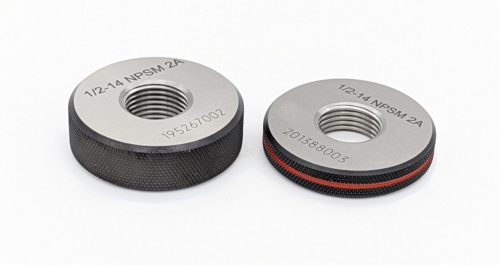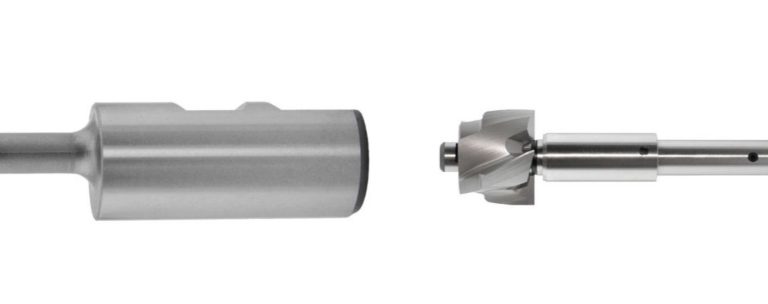Solid Ring Gauges vs Split Ring Gauges
Lets Analyze The Benefits
When it comes to measuring external threads, one of the primary tools used is a thread ring gauge. These gauges are used to verify the pitch diameter and the functional size of threaded components. However, there are two types of thread ring gauges: solid and split ring gauges. While both can be effective for measuring threads, there are several advantages to using solid thread ring gauges.
First, let’s briefly cover what solid and split ring gauges are. Solid thread ring gauges are a one-piece design that is made from a solid piece of steel. The thread profile is machined into the gauge and there are no moving parts. In contrast, split ring gauges are made up of one piece and has split down the middle on one side. The two halves can be adjusted to fit a range of thread sizes and are held together by a locking mechanism. (typically, a screw)
Now, let’s look at the advantages of using solid thread ring gauges:
- Accuracy – Solid thread ring gauges are more accurate than split ring gauges. Because they are machined from a single piece of steel, there is less chance of distortion or misalignment. In contrast, split ring gauges can be prone to misalignment and distortion due to the two separate halves.
- Durability – Solid thread ring gauges are more durable than split ring gauges. Because they are made from a single piece of steel, there are no moving parts to wear out or break. Split ring gauges, on the other hand, are more prone to wear and tear due to the locking mechanism and two separate halves.
- Checking Time – Solid thread ring gauges are faster to use than split ring gauges. With a solid thread ring gauge, there is no need to adjust the gauge to fit the thread size. This can save time and make the measuring process more efficient.
- Cost – While solid thread ring gauges can be more expensive than split ring gauges, they are often a better long-term investment. Because they are more accurate and durable, they can provide more consistent and reliable results over time. This can help to reduce the need for frequent gauge replacements and save money in the long run.
In conclusion, solid thread ring gauges are a better choice for measuring threads than split ring gauges. From increased accuracy and durability to faster measuring times and better long-term value, solid thread ring gauges offer a range of benefits that make them a smart investment for any manufacturing process. While split ring gauges may be appropriate in certain situations, solid thread ring gauges are a more reliable and consistent choice for most measuring applications.







